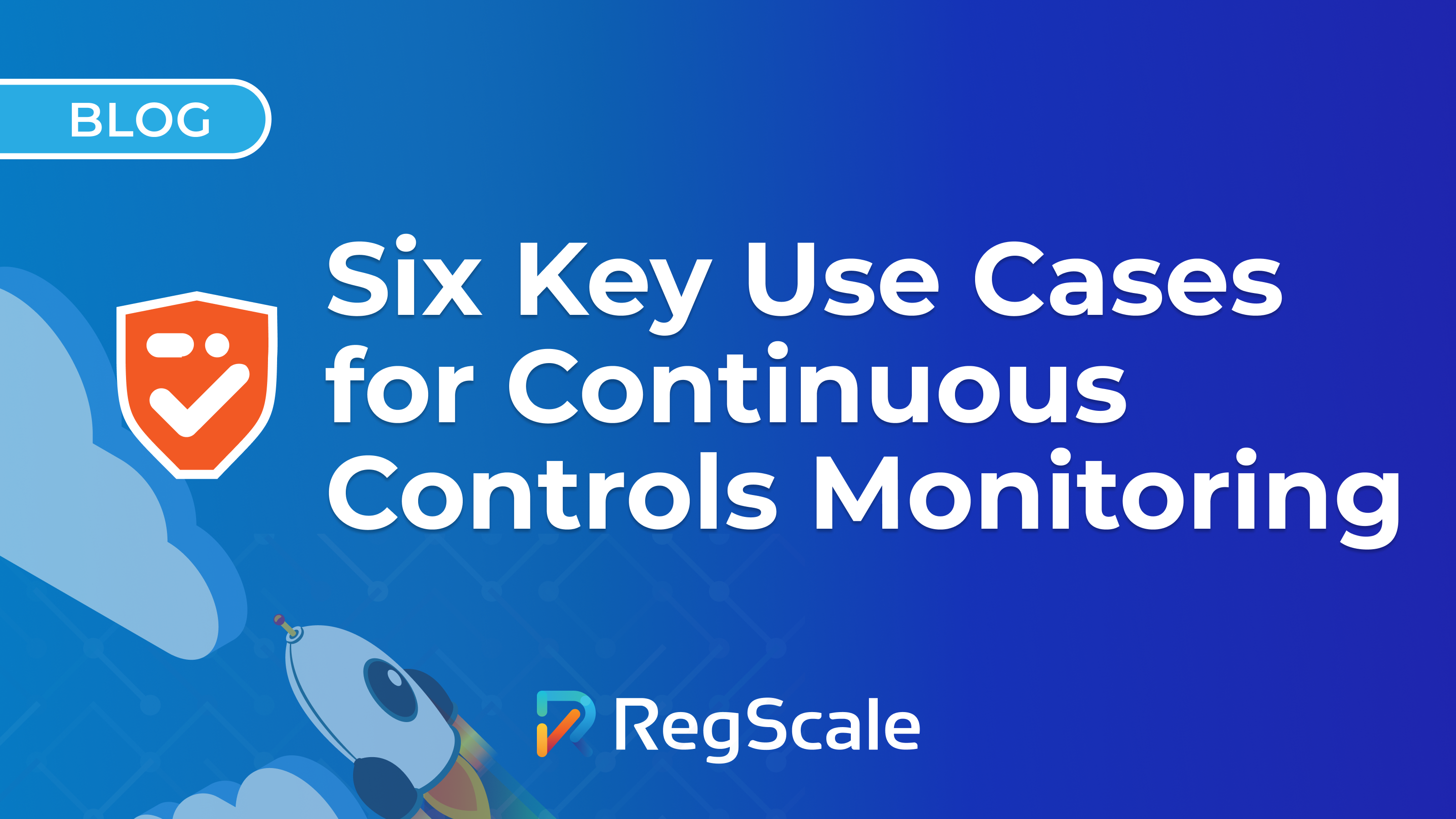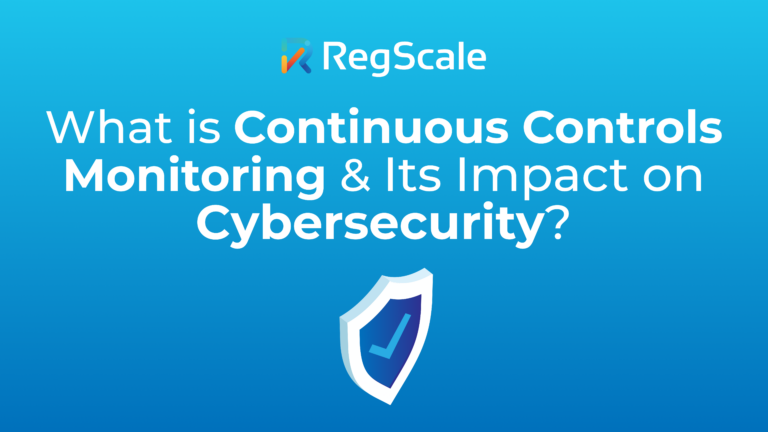Maintaining a strong security posture and ensuring compliance are critical challenges for organizations. Are you looking for ways to address these challenges more effectively? Continuous Controls Monitoring (CCM) offers an effective solution, enhancing governance, risk management, and compliance (GRC).
Let’s take this opportunity to explore six key use cases for CCM, drawing on insights from renowned author Dr. Edward Amoroso’s white paper, “Leveraging Continuous Controls Monitoring (CCM) for Compliance and Security,” to highlight the benefits and applications of CCM in various scenarios.
1. FedRAMP compliance
Achieving and maintaining compliance with the Federal Risk and Authorization Management Program (FedRAMP) is a significant challenge for organizations, particularly those in the public sector. CCM platforms streamline the FedRAMP certification process by automating the end-to-end monitoring of compliance controls. This includes program establishment, evidence collection, control assessment, issue remediation, risk management, and ongoing surveillance.
By integrating an automated, end-to-end monitoring process, organizations can expedite the time required to secure an Authority to Operate (ATO). The continuous compliance provided by CCM ensures minimal manual intervention, allowing organizations to maintain stringent security standards with agility and confidence.
Leveraging AI and Compliance as Code, CCM delivers real-time updates and automated evidence collection, significantly reducing audit preparation time by up to 60%. Advanced integrations and customizable reporting further ensure that compliance efforts are efficient and comprehensive. This holistic approach not only accelerates FedRAMP certification but also improves overall security posture and operational efficiency.
2. Rapid certification
Achieving rapid certification for compliance frameworks like SOC 2, CMMC, or NIST CSF is a significant benefit of utilizing Continuous Controls Monitoring (CCM) platforms. These platforms streamline compliance processes, reducing the mean time to compliance.
In 2023, the Office of Management and Budget (OMB) highlighted automation as crucial for modernizing the FedRAMP process, traditionally spanning 18-36 months. By leveraging a CCM pipeline, agencies and Cloud Service Providers (CSPs) can automate compliance data ingestion and validation, drastically reducing certification timelines. For instance, a recent RegScale customer completed a FedRAMP High package in just three months.
This streamlined approach simplifies the development of compliance programs, automates evidence collection, assesses controls, and manages risks more effectively. Continuous monitoring ensures ongoing vigilance, yielding both cost savings and enhanced compliance accuracy. Integrating CCM accelerates certification, meets regulatory standards, and improves overall operational efficiency and security.
3. Automated evidence collection
Evidence collection for audits and compliance assessments can be a cumbersome and error-prone process. According to a study by Deloitte, organizations spend up to 20% of their time on manual evidence collection, increasing the risk of errors and inconsistencies. CCM platforms automate this process, offering a centralized, real-time approach to tracking compliance evidence and reducing conflicts from multiple sources.
These benefits are not limited to accuracy, as they also improve time efficiency. Reports from ISACA highlight that automated evidence collection can cut audit preparation time by 60%, resulting in significant cost savings and improved accuracy. By providing always audit-ready documentation, CCM platforms enhance transparency and reduce costs, leading to a more efficient and error-free audit experience. Case studies show a 40% improvement in productivity and compliance accuracy, as organizations streamline audit processes and reduce manual interventions.
CCM platforms integrate with various data sources and compliance tools, ensuring continuous compliance and swift responses to regulatory changes. By leveraging automation and data analytics, these platforms simplify evidence collection and ensure compliance efforts are accurate, consistent, and aligned with regulatory requirements.
4. Risk management
Effective risk management is crucial for any organization, and CCM platforms transform this process into a dynamic and proactive strategy. For instance, a Deloitte report highlights that organizations implementing CCM can reduce risk exposure by up to 40% due to continuous monitoring and real-time adjustments. This ensures that risk management is a constant, vigilant guard against potential vulnerabilities.
Continuous oversight: Consistently monitors enterprise risk, third-party interactions, and investment portfolios. The previously referenced ISACA report indicates that continuous monitoring can reduce the time to detect and respond to risks by 50%, enhancing overall security.
Proactive adjustments: Anticipates risks and adjusts controls in real-time. A case study from the financial sector shows that proactive risk adjustments using CCM reduced the impact of potential threats by 35%, enabling organizations to maintain operational stability.
AI-driven insights: Uses AI to provide actionable insights, enhancing the strategic advantage of risk management. According to the McKinsey report “AI-Driven Risk Management Strategies and Decision-Making Speed,” AI-driven risk management strategies can increase decision-making speed by 30%, providing organizations with a competitive edge.
5. Automated controls mapping
Compliance management often involves navigating multiple frameworks and regulations, which can be complex and time-consuming. CCM platforms simplify this process by mapping a single control across multiple compliance frameworks, eliminating redundant tasks, and ensuring a harmonized compliance posture.
CCM has also demonstrated significant efficiency gains. As highlighted in a recent webinar “Leveraging Continuous Controls Monitoring (CCM) for Compliance with NIST CSF 2.0”, organizations using RegScale’s CCM platform have reported a 40% improvement in compliance accuracy due to the seamless integration of controls mapping across various regulatory frameworks. This approach ensures that updates or reviews of a control are reflected across all applicable frameworks in real-time, providing increased clarity and agility in responding to regulatory changes. Additionally, the automation capabilities of CCM result in substantial cost savings and streamlined compliance processes.
By leveraging these automation capabilities, organizations can maintain an efficient approach to compliance across diverse regulatory landscapes, ensuring a consistent and accurate compliance posture.
6. DevSecOps Compliance as Code
Ensuring compliance within DevSecOps practices involves embedding security and compliance checks directly into the development pipeline. Compliance as Code (CaC) automates the enforcement of compliance policies, making it an integral part of the software development lifecycle.
Automated compliance checks: By leveraging Compliance as Code, organizations can automate the compliance verification process. This ensures that compliance policies are consistently enforced across all stages of development, reducing the likelihood of human error and non-compliance.
Real-time policy enforcement: CaC tools enable real-time compliance monitoring and enforcement, ensuring that any deviation from compliance standards is immediately flagged and addressed. This continuous monitoring helps maintain a high level of security and compliance throughout the development process.
Integration with DevSecOps pipelines: Compliance as Code seamlessly integrates with existing DevSecOps pipelines, allowing developers to incorporate compliance checks into their workflows without disrupting their processes. This integration ensures that compliance is maintained from code commit to deployment.
Enhanced security posture: Implementing Compliance as Code strengthens the organization’s security posture by ensuring that all code changes are compliant with regulatory standards. This proactive approach minimizes the risk of security breaches and ensures that the organization remains compliant with industry regulations.
Cost efficiency and risk reduction: Automating compliance checks reduces the time and resources required for manual audits and reviews. This not only lowers operational costs but also mitigates the risk of non-compliance penalties, providing a cost-effective solution for maintaining regulatory compliance.
The strategic advantage of implementing CCM
Implementing CCM offers numerous benefits across various use cases, from FedRAMP compliance to risk management and rapid certification. By leveraging automation, AI, and real-time monitoring, CCM platforms enable organizations to maintain an always-ready state, ensuring both strong security and continuous compliance.
Eager to enhance your compliance and risk management? Schedule a personalized demo with us. Our team will showcase our advanced CCM solutions, illustrating how you can achieve real-time oversight, cut down on manual work, and ensure continuous compliance. Step into the future of compliance management today.
Ready to get started?
Choose the path that is right for you!
Skip the line
My organization doesn’t have GRC tools yet and I am ready to start automating my compliance with continuous monitoring pipelines now.
Supercharge
My organization already has legacy compliance software, but I want to automate many of the manual processes that feed it.

